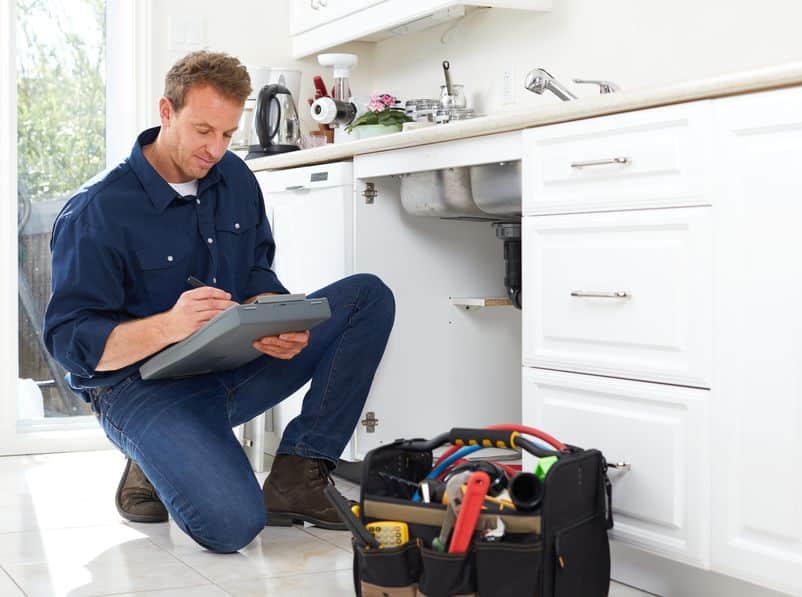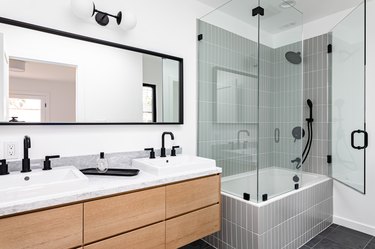The Future Awaits in Plumbing: Patterns and Innovations
The Future Awaits in Plumbing: Patterns and Innovations
Blog Article
We've encountered this great article involving 7 Plumbing Industry Trends You Need To Know directly below on the web and believe it made perfect sense to talk about it with you here.

Intro
The plumbing market is undertaking a transformative stage driven by technical advancements and expanding issues for sustainability and effectiveness. This write-up checks out emerging trends and developments forming the future of plumbing.
Smart Plumbing Solutions
Incorporating smart technology into plumbing systems makes it possible for remote monitoring, leakage detection, and automated maintenance. Smart sensors and IoT (Web of Points) tools permit house owners and plumbing professionals to check water usage and spot issues in real-time, leading to extra efficient source management and proactive maintenance.
Water Efficiency Solutions
With raising focus on water conservation, cutting-edge remedies are being developed to reduce water waste in pipes systems. High-efficiency fixtures, greywater recycling systems, and smart watering controllers are among the modern technologies helping customers reduce their water impact while keeping comfort and ease.
Lasting Materials
The change towards sustainability reaches plumbing products, with an expanding preference for environment-friendly options. Naturally degradable piping products, such as PEX (cross-linked polyethylene) and HDPE (high-density polyethylene), offer longevity and resistance to corrosion without compromising ecological integrity.
Predictive Maintenance
Anticipating upkeep strategies leverage information analytics and machine learning algorithms to anticipate and prevent plumbing issues prior to they happen. By evaluating historical data and performance metrics, anticipating maintenance formulas can identify patterns and anomalies, enabling positive interventions to avoid costly repair work and disturbances.
Augmented Reality in Pipes
Enhanced Fact (AR) modern technology is changing pipes by supplying professionals with real-time visual assistance for fixing and fixing jobs. AR-enabled smart glasses or mobile applications overlay electronic information onto the physical environment, assisting plumbing technicians imagine pipe formats, identify covert leaks, and execute repair services with accuracy.
Influence of 3D Printing
The advent of 3D printing has introduced new opportunities in manufacturing pipes components. From custom-made components to complex pipe fittings, 3D printing permits rapid prototyping and on-demand production, decreasing lead times and making it possible for higher personalization in plumbing style.
Health and Safety Features
In reaction to enhanced worries for health and wellness, pipes fixtures are including features such as antimicrobial surfaces, touchless operation, and self-cleaning mechanisms. These innovations not just enhance health however additionally advertise customer convenience and ease.
Hygiene-focused Components
Touchless taps, self-sanitizing commodes, and antimicrobial surface areas are coming to be increasingly prevalent in domestic and business settings, minimizing the threat of germ transmission and advertising a cleaner, much healthier atmosphere.
Water Top Quality Monitoring
Developments in water top quality surveillance modern technologies enable house owners to keep track of the purity and safety and security of their water system in real-time. Smart water top quality sensors can spot pollutants, pH levels, and temperature variations, equipping individuals to take proactive measures to guarantee water safety.
Remote Pipes Providers
Remote diagnostics and online assistance are transforming the means plumbing solutions are delivered. Via video conferencing and remote gain access to innovations, plumbing technicians can troubleshoot problems, provide support for do it yourself fixings, and also do remote evaluations, using better availability and convenience to homeowners.
Challenges and Opportunities
While pipes technologies hold immense pledge, they also present obstacles such as data personal privacy problems, governing compliance, and the requirement for labor force training. Attending to these difficulties needs partnership in between industry stakeholders and regulative bodies to guarantee safe and liable execution of new modern technologies.
Regulative Landscape
Governing structures play a crucial function in shaping the fostering of pipes innovations, with standards and codes controling whatever from water efficiency to item safety and security. As innovations continue to develop, regulatory bodies have to adjust to guarantee consumer security and environmental stewardship.
Future Expectation
The future of pipes is characterized by proceeded innovation and integration with various other fields such as IoT, renewable resource, and building automation. By embracing sustainable practices, leveraging arising innovations, and prioritizing user-centric design, the plumbing market is positioned to address the developing demands of culture while decreasing its ecological footprint.
Verdict
In conclusion, the future of pipes is specified by a convergence of innovation, sustainability, and user-centric style. By embracing smart services, lasting materials, and proactive upkeep practices, the pipes sector can improve efficiency, promote safety and security, and add to a much more sustainable future.
Plumbing Industry Trends You Need To Know
Smart technology in plumbing
Homeowners want to be able to manage their homes from their phones. The technology exists to make that happen. From smart toilets to leak detector devices, the whole plumbing system can be managed on an interconnected network made up of sensors, IoT devices, and machine learning algorithms.
This allows for wireless control to turn appliances on and off, automate routines, and access advanced monitoring to track water usage and flag potential issues. Smart technology streamlines water consumption, maintenance and energy usage, creating a more efficient system.
Green plumbing
The data analysis possible with smart technology not only improves convenience and cost-effectiveness but also fulfills a high-priority customer desire – sustainability. Consumers are very aware of their impact on the planet and want plumbing solutions to reduce damage and support sustainability. Eco-friendly plumbing solutions are already starting to emerge.
Customers can opt for low-flow toilets, water-saving faucets, and connections to sustainable energy sources. Beyond monitoring water consumption, customers can conserve water through the installation of greywater systems. This is a system that collects water that has been used but is still clean enough for some household uses such as toilet flushing.
Shorter product pipeline
To keep up with modern plumbing, plumbers need modern tools that enable them to complete jobs more efficiently. One technology making strides in this area is 3D printing. By 3D printing key plumbing fixtures, plumbers can reduce wait times even for specialized fixtures. It minimizes delays often seen in traditional manufacturing that frustrate customers and prevent plumbers from taking on more work.
Off-site repairs
Augmented reality is making a splash in many industries including plumbing. Plumbers can map a building online so they can explore the plumbing system through augmented reality, identifying areas of maintenance and repair completely digitally. This technology can be applied quite widely in plumbers’ work including planning installations and training new recruits. It’s safer, smarter and more efficient.
Low-footprint materials
Another way for plumbing companies to reduce their environmental footprint and meet the customer demand for sustainability is by using recycled materials in their work. The products they source and manufacture such as pipes, fixtures and faucets can be made from recycled materials. This saves the planet while being just as effective.
Onsite water purification
Additionally, plumbing companies can be advocates of water conservation and ease the financial and environmental concerns of customers by offering water purification systems. New water purification technology such as reverse osmosis systems and UV systems make it possible for homeowners and business owners to thoroughly cleanse water, removing contaminants onsite. This means the water can be safely reused in more ways than greywater can be, establishing a water recycling loop.
Tankless water heaters
Another innovation of modern plumbing is tankless water heaters. The idea is that the water is heated on demand as it runs through the system instead of being heated in a water tank. This is more energy efficient and therefore cost-effective and eco-friendly because water isn’t heated needlessly.

Do you like reading about 7 Plumbing Industry Trends You Need To Know? Make feedback further down. We'd be delighted to know your thinking about this blog posting. Hoping to see you back again soon. Do you know anybody else who is very much interested in ? Feel free to share it. Thanks a lot for taking the time to read it.
Call Today Report this page